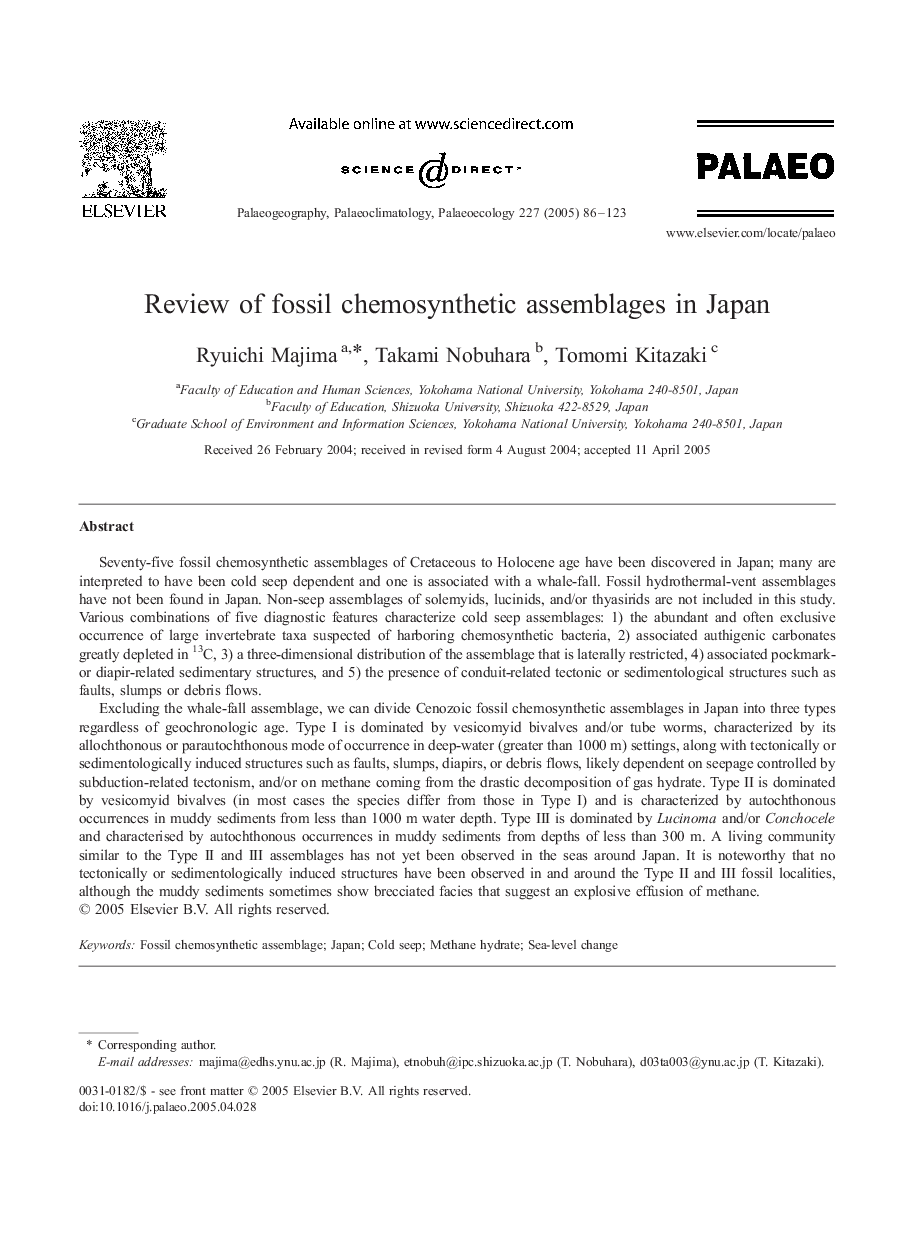| Article ID | Journal | Published Year | Pages | File Type |
|---|---|---|---|---|
| 9462993 | Palaeogeography, Palaeoclimatology, Palaeoecology | 2005 | 38 Pages |
Abstract
Excluding the whale-fall assemblage, we can divide Cenozoic fossil chemosynthetic assemblages in Japan into three types regardless of geochronologic age. Type I is dominated by vesicomyid bivalves and/or tube worms, characterized by its allochthonous or parautochthonous mode of occurrence in deep-water (greater than 1000 m) settings, along with tectonically or sedimentologically induced structures such as faults, slumps, diapirs, or debris flows, likely dependent on seepage controlled by subduction-related tectonism, and/or on methane coming from the drastic decomposition of gas hydrate. Type II is dominated by vesicomyid bivalves (in most cases the species differ from those in Type I) and is characterized by autochthonous occurrences in muddy sediments from less than 1000 m water depth. Type III is dominated by Lucinoma and/or Conchocele and characterised by autochthonous occurrences in muddy sediments from depths of less than 300 m. A living community similar to the Type II and III assemblages has not yet been observed in the seas around Japan. It is noteworthy that no tectonically or sedimentologically induced structures have been observed in and around the Type II and III fossil localities, although the muddy sediments sometimes show brecciated facies that suggest an explosive effusion of methane.
Related Topics
Physical Sciences and Engineering
Earth and Planetary Sciences
Earth-Surface Processes
Authors
Ryuichi Majima, Takami Nobuhara, Tomomi Kitazaki,
